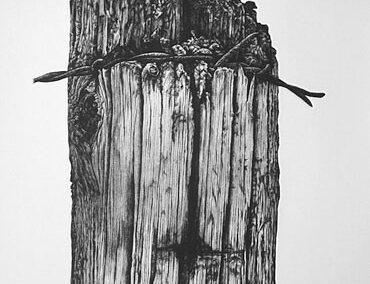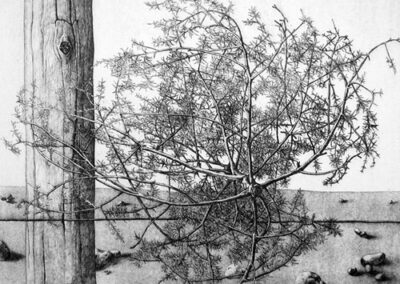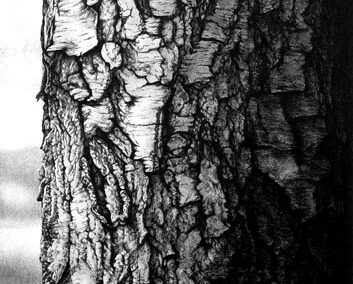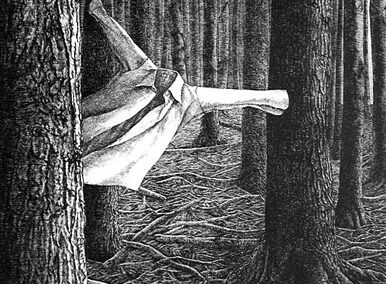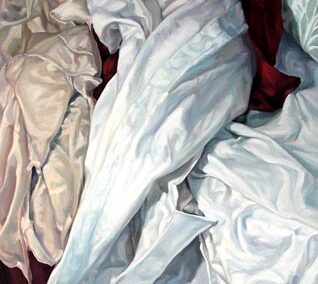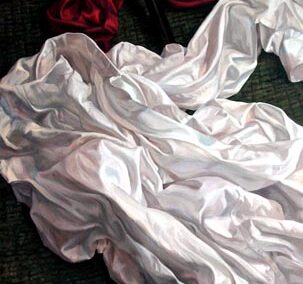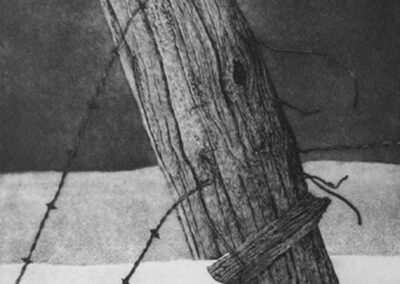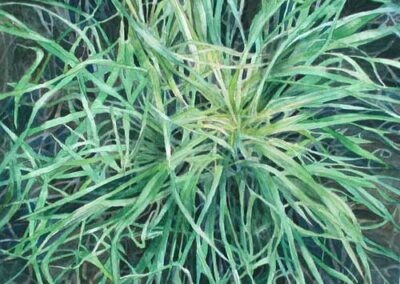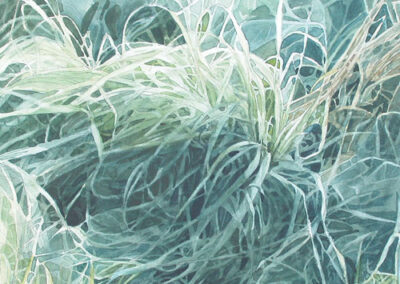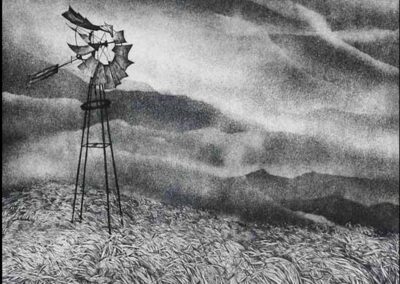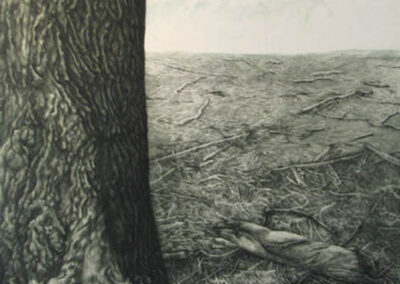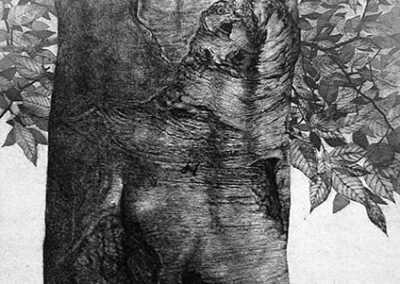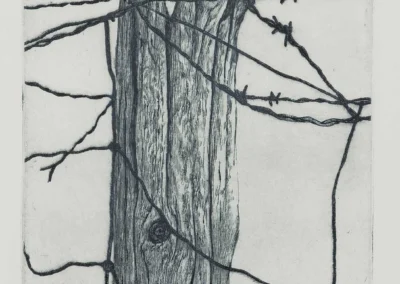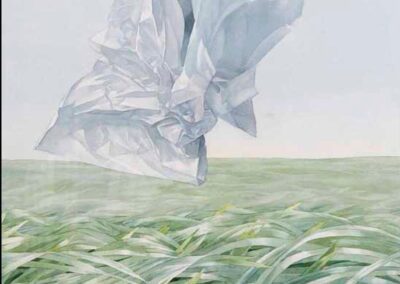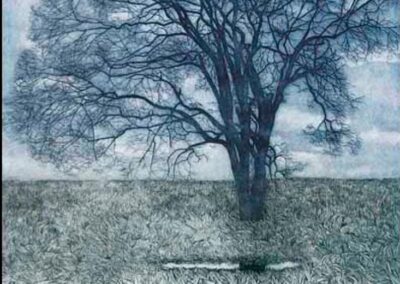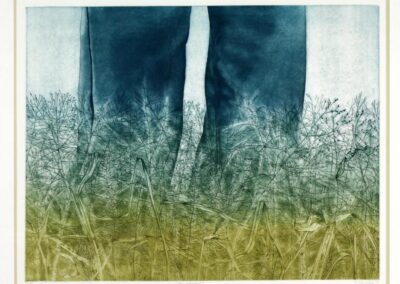Our next Artist You Need To Know is Jo Manning (1923-2022). Manning was a Canadian etcher, painter and author.
Manning was one of Canada’s foremost printmakers, specifically in terms of her etchings over a career that spanned several decades and garnered her several awards in both Canada and abroad. Her artwork was often thematically focused on the “the forests and meadows where she has spent many solitary hours, drawing and photographing [and] collecting material to take back to the studio. The etchings and paintings that result are strongly constructed, with fine detail, and are presented as allegories.” (from Westland Gallery)
She was an executive member of the Canadian Society of Graphic Art, a member of the Canadian Society of Painter-etchers and Engravers, and a founding member of the Print and Drawing Council of Canada.
Manning was born on Vancouver Island in a village that was still very rural, near the Straits of Georgia, amidst forest and ocean (one can see how, even this early, this would shape her artworks). Later her family would move to Southern Ontario. Growing up during the Depression, her father’s medical practice stuttered due to economic concerns but his interest in painting was one he encouraged in his daughter. She would attend the Ontario College of Art (studying under John Alfsen), graduating in 1945 : Manning would marry and raise four children, but always found time to make art and stay informed about contemporary artists.
Manning was able to truly focus on her artistic career around 1960 : she returned to OCA, studying printmaking and later (in 1970) Manning would attend George Brown College in Toronto.
Notable exhibitions of her work were mounted at the Pollock Gallery in Toronto (1965, 1968), Gallery Pascal, Toronto (1974, 1977, 1980), Mira Godard Gallery, Montreal (1976), Earlscourt Gallery, Hamilton, Ontario (1979), Gadatsky Gallery, Toronto (1984) and Bishop’s University, Lennoxville, Quebec.
In tandem with her exhibitions, from 1965 onwards Manning was an instructor at several institutions, including Ontario Department of Education’s Youth and Recreation Division; Sheridan College (1971-3); Dundas Valley School of Art; Centennial College; Elliot Lake Centre for Continuing Education; Artists’ Workshop and numerous other workshops.
Like many who were major contributors in regard to the revival of printmaking in North America in the post WW II era, Manning experienced numerous health issues and illness from repeated exposure to acids, solvents and photoresists. Manning began to work in other media, such as ink, and painting in oil and watercolour around 1980.
A more extensive listing of her exhibitions and accomplishments can be seen here.
In a review of Manning’s artwork, Kathleen Walker asserted that “I have always enjoyed the stark simplicity of Jo Manning’s etchings. Her trees mesh textural sensations with age-old resilience; her compositions are abrubtly cut, offering the viewer only a sliver of nature. Yet that sliver is often a Truth.”
Manning earned many awards in recognition of her fine printmaking work : these include a gold medal at the 2nd Print Biennale (1970) in Florence, Italy, first prize at the 4th American Print Biennale (1970) in Santiago, Chile, and the medal of honor at the International Graphic Biennale (1980) in Frechen, Germany. Her work can be found in numerous public and private collections, including the National Gallery of Canada in Ottawa, Montreal Museum of Fine Arts, Art Gallery of Windsor, University of Calgary (Alberta), London Library & Art Museum (London, ON), University of Waterloo, Lambton College (Sarnia, ON), University of Guelph, Guelph and the Canada Council Art Bank.
Jo Manning passed away in 2022 in Victoria, BC.
Much more about her work and life can be seen here. She also published two books : A Printmaker’s Memoir (2009) and Etched in Time (2016). The latter “is more than one woman’s story. Manning offers an insightful look at life – especially for women and artists – in the last half of the 20th Century. She catalogues the challenges and opportunities, charts the changing times and shares her experiences as part of a new generation of Canadian artists challenging traditions. Etched in Time is both memoir and history. It’s a look back at nine decades, delivered with candour, wisdom and the sharp eye of an artist.”

